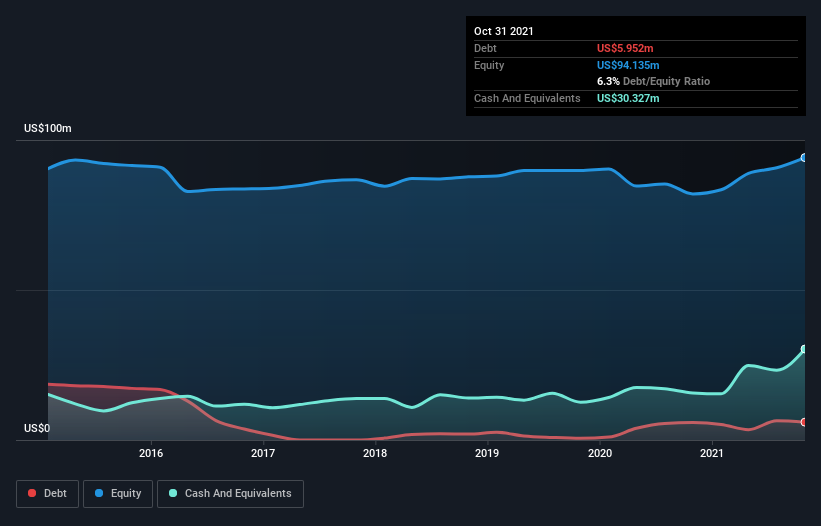AMREP (NYSE:AXR) Could Easily Take On More Debt
Warren Buffett famously said, 'Volatility is far from synonymous with risk.' It's only natural to consider a company's balance sheet when you examine how risky it is, since debt is often involved when a business collapses. We can see that AMREP Corporation (NYSE:AXR) does use debt in its business. But the real question is whether this debt is making the company risky.
When Is Debt A Problem?
Debt is a tool to help businesses grow, but if a business is incapable of paying off its lenders, then it exists at their mercy. If things get really bad, the lenders can take control of the business. While that is not too common, we often do see indebted companies permanently diluting shareholders because lenders force them to raise capital at a distressed price. Of course, plenty of companies use debt to fund growth, without any negative consequences. When we think about a company's use of debt, we first look at cash and debt together.
Check out our latest analysis for AMREP
What Is AMREP's Net Debt?
As you can see below, AMREP had US$5.95m of debt, at October 2021, which is about the same as the year before. You can click the chart for greater detail. However, its balance sheet shows it holds US$30.3m in cash, so it actually has US$24.4m net cash.
A Look At AMREP's Liabilities
Zooming in on the latest balance sheet data, we can see that AMREP had liabilities of US$4.79m due within 12 months and liabilities of US$5.99m due beyond that. Offsetting this, it had US$30.3m in cash and US$58.0k in receivables that were due within 12 months. So it can boast US$19.6m more liquid assets than total liabilities.
This surplus suggests that AMREP is using debt in a way that is appears to be both safe and conservative. Due to its strong net asset position, it is not likely to face issues with its lenders. Succinctly put, AMREP boasts net cash, so it's fair to say it does not have a heavy debt load!
It was also good to see that despite losing money on the EBIT line last year, AMREP turned things around in the last 12 months, delivering and EBIT of US$19m. The balance sheet is clearly the area to focus on when you are analysing debt. But it is AMREP's earnings that will influence how the balance sheet holds up in the future. So if you're keen to discover more about its earnings, it might be worth checking out this graph of its long term earnings trend.
Finally, a company can only pay off debt with cold hard cash, not accounting profits. While AMREP has net cash on its balance sheet, it's still worth taking a look at its ability to convert earnings before interest and tax (EBIT) to free cash flow, to help us understand how quickly it is building (or eroding) that cash balance. During the last year, AMREP produced sturdy free cash flow equating to 79% of its EBIT, about what we'd expect. This cold hard cash means it can reduce its debt when it wants to.
Summing up
While it is always sensible to investigate a company's debt, in this case AMREP has US$24.4m in net cash and a decent-looking balance sheet. And it impressed us with free cash flow of US$15m, being 79% of its EBIT. So is AMREP's debt a risk? It doesn't seem so to us. When analysing debt levels, the balance sheet is the obvious place to start. But ultimately, every company can contain risks that exist outside of the balance sheet. To that end, you should be aware of the 1 warning sign we've spotted with AMREP .
Of course, if you're the type of investor who prefers buying stocks without the burden of debt, then don't hesitate to discover our exclusive list of net cash growth stocks, today.
Have feedback on this article? Concerned about the content? Get in touch with us directly. Alternatively, email editorial-team (at) simplywallst.com.
This article by Simply Wall St is general in nature. We provide commentary based on historical data and analyst forecasts only using an unbiased methodology and our articles are not intended to be financial advice. It does not constitute a recommendation to buy or sell any stock, and does not take account of your objectives, or your financial situation. We aim to bring you long-term focused analysis driven by fundamental data. Note that our analysis may not factor in the latest price-sensitive company announcements or qualitative material. Simply Wall St has no position in any stocks mentioned.

